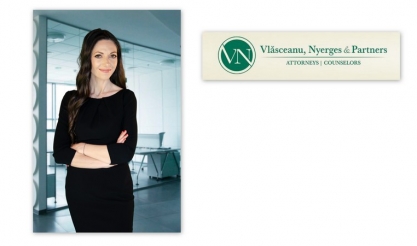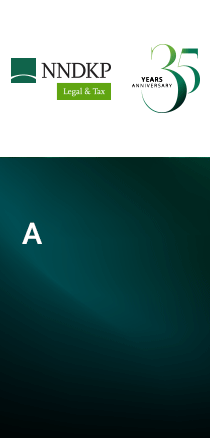
New MADR Norms – the Good, the Bad and the Ugly for renewables
25 Octombrie 2022 Mihaela Nyerges, Partner - Vlăsceanu, Nyerges & Partners
The Norms have been finally adopted earlier this month. Now that they are here, what do they mean for development of renewables?

|
The Norms have been finally adopted earlier this month. Now that they are here, what do they mean for development of renewables?
As a preliminary note, although the Norms were expected to clarify aspects related to projects exceeding 50 hectares, the Norms are limited to amending the procedure for removing the land from the agricultural circuit, in order to align it with the new provisions of the Land Fund Law.
1. Surface to be removed from agricultural circuit in case of dual use of the land
The biggest gain bought by the Norms is that they clarified which sections of the land should be removed from agricultural circuit in case of dual use of the land (power generation and agricultural activities). These are the sections on which ground level constructions are being erected: such as the pillars of the mounting structure, invertors, transformers substations, storage facilities, access roads.
Therefore, in case of PV projects, it is clarified that only the land affected by the pillars should be removed from agricultural circuit, not also the land corresponding to panels projection. Such could contribute substantially to the decrease of the land removal tax, which is one of the main costs in the development process. However, the practical impact is not that high, since (i) the dual use of the land is not allowed for arable land (which is frequently the land suitable for power generation projects) and (ii) the above principles do not apply to pastures (as we will explain below).
In view of the above, the applicant should submit, among other, the technical project outlining the type of project, the placement of the project components, occupation degree, the agricultural activities to be conducted, surfaces to be used for dual purpose.
2. Indirect limitation to developing power generation capacities inside farms only
One of the mandatory documents for removing the land from agricultural circuit in case of renewable generation capacities is the “technical project regarding the placement within the farms of the renewable power generation facilities used exclusively for the own consumption of the farms.”
This document implies that the power generation capacities may be erected only within farms and only for ensuring the power consumption of the farms. This is obviously a limitation which is no longer existing in the Land Fund Law (following the recent changes), and which may not be enacted through a legal enactment inferior to the Land Fund Law (such as the Norms).
In our view, this provision is the result of a clerical error, and we can only hope that it will be corrected shortly before causing (another) blockage in the development process.
3. Unclear land regime between land removal decision and building permit
The land is removed from the agricultural circuit through the decision adopted by the relevant county agricultural department. However, according to the Norms, the land can be registered with the Land Book as buildable land only later on in the development process, after obtaining the building permit.
It is therefore unclear the legal and tax regime of the land during the period between the land removal decision and the building permit.
4. Unclear rules for requalification of the land as agricultural in case of failed projects
The Norms provide that, if the investment works are not initiated within 5 years from the land removal decision, the land is requalified back as agricultural land “by virtue of law”, based on a notification sent to the relevant county agriculture department by the land removal beneficiary.
The requalification of the land as agricultural land “by virtue of law” seems to imply that this requalification occurs automatically upon the expiry of the 5 years period, without another administrative act being needed from the authorities. However, such principle seems to be contradicted by the fact that a notification should be sent by the beneficiary. Also, if the notification is sent long time after the 5-year term, it is not clear what will be the legal and tax regime of the land in the period between the expiry of the 5-year term and the notification.
Also, judging from the experience of the first wave of renewables (after which many landowners were stuck with intra muros lands and had to face lengthy court/administrative proceedings to change back the land destination), the beneficiary may no longer have any motivation to file such request. From this perspective, it seems more appropriate that the landowner should be also allowed to file such notification in case the superficies agreements are terminated due to failed projects.
5. No rules for pastures
The Norms do not set out the rules applicable to pastures. The reason for this is that the Norms are amending only the general regulation applicable to agricultural removal of all types of lands (pastures excluded), without touching the regulation dedicated to pastures removal from agricultural circuit.
It, therefore, remains to be seen whether the rules referred above regarding the dual use of the land will be replicated for pastures. Such rules will decisively influence the feasibility of developing renewables on pastures.
| Publicitate pe BizLawyer? |
  |
| Articol 826 / 4484 | Următorul articol |
| Publicitate pe BizLawyer? |
 |

Țuca Zbârcea & Asociații, alături de veteranii din Al Doilea Război Mondial
Proprietatea intelectuală sărbătorită de echipa BACIU PARTNERS prin Concursul de Procese Simulate de Dreptul Proprietății Intelectuale, ajuns la cea de-a III-a ediție
KPMG Legal – Toncescu și Asociații și KPMG Tax au asistat Pavăl Holding în achiziția proiectului Ethos House, o clădire de birouri premium situată în nordul Capitalei
Rundă de promovări în mai multe arii de practică în biroul Kinstellar din București. Magdalena Răducanu preia rolul de Partener, alți șase avocați fac un pas înainte în carieră | Victor Constantinescu (Managing Partner): ”Aceste promovări recente nu sunt doar etape importante în cariera colegilor noștri, ci și confirmare a abilității lor de leadership și a rolurilor esențiale în cadrul biroului nostru”
Răsturnare de situație: doar trei case locale de avocați rămân în topul global al celor mai bune 100 de firme implicate în arbitraje internaționale | Filip & Company intră în top, iar două firme cu un trecut bogat în domeniul arbitrajelor și prezență constantă în ghidurile de profil au părăsit clasamentul. ZRVP și LDDP rămân pilonii prezenței românești în GAR 100, ediția 2025
Women Lawyers | De vorbă cu Andreea Soare (Senior Associate - BSMP), avocat care spune că pentru a avea o carieră durabilă, este fundamental să fii cu adevărat pasionat de munca pe care o depui și dedicat îndeplinirii cu succes a mandatelor încredințate. ”Principalele avantaje ale apartenenței la această firmă sunt diversitatea proiectelor la care avem acces și oportunitățile de dezvoltare professională. Cultura deschisă și orientată spre colaborare permite un schimb constant de idei și soluții creative”
LegiTeam: Atorney at Law | Dispute Resolution for commercial ̸ administrative litigation and arbitration | Reff & Associates
Promovări în echipa Filip & Company: Andreea Bănică și Alin Grapă ajung pe poziția de Counsel, alți patru avocați urcă în ierarhie | Cristina Filip, co-managing partner: ”Prin aceste promovari consolidăm fundamentele organizației printr-o noua generație de avocați excepționali”
BACIU PARTNERS câștigă premiul ‘Firma de Copyright & Design a Anului în România’ la gala Managing IP EMEA Awards 2025, desfășurată la Londra. Andreea Bende (Partener), premiată ca ‘Practicianul Anului în România’ | Ana-Maria Baciu, Managing Partner: ”Este o reconfirmare a faptului că principiile pe care le integrăm în fiecare proiect creează în mod constant valoare tangibilă, vizibilă și demnă de recunoaștere”
CMS România își mărește echipa în România prin cooptarea strategică a unui senior counsel și lansează practica de Apărare | Horea Popescu (Managing Partner): „Cristian Băcanu se remarcă printr-o combinație unică de experiență juridică, leadership în sectorul public și viziune internațională, ceea ce îl recomandă ca un membru valoros al echipei noastre”
Cei mai buni litigatori din România, văzuți de Chambers Europe 2025 | Cine sunt practicienii apreciați de clienți în practica de Dispute Resolution și ce spun clienții despre aceștia. Nouă avocați români sunt evidențiați în practica de arbitraj
Trei avocați români de la Bondoc & Asociații, Filip & Company și DLA Piper sunt considerați ‘Eminent Practitioners’ în practica de fuziuni și achiziții. Clasamentul Chambers Europe 2025, cu cei mai buni avocați de Corporate ̸ M&A din România
-
BizBanker
-
BizLeader
- in curand...
-
SeeNews
in curand...











 RSS
RSS














































